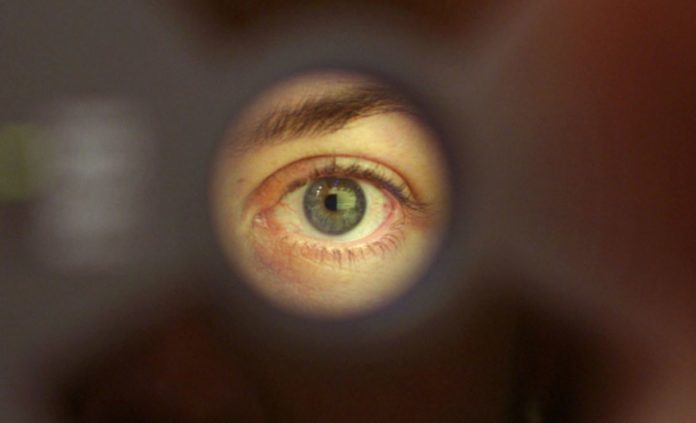Cardiovascular disease is the leading cause of death and disability worldwide. However, patients at increased risk of developing heart disease can avoid it by making timely lifestyle changes and taking appropriate medications.
Alas, in most cases, pathologies remain undetected until myocardial infarction or stroke occurs.
Therefore, it is important to identify biomarkers that would help identify patients with latent cardiovascular disease. People exposed to it are known to be prone to vascular occlusion of the retina – a multilayer nervous tissue with a complex capillary network.
- Does This Mean We Stopped Being Animal and Started Being Human Due to ‘Copy Paste’ Errors?
- The One Lifestyle Choice That Could Reduce Your Heart Disease Risk By More Than 22%
- Aging: This Is What Happens Inside Your Body Right After Exercise
- Immune-Boosting Drink that Mimics Fasting to Reduce Fat – Scientists ‘Were Surprised’ By New Findings
- Gun Violence in America: What They Don’t Talk About at the Debate
The superficial and deep vascular plexuses provide oxygen to the inner and middle parts of the retina, while the outer layer receives oxygen from the choriocapillaris. With severe vascular occlusion, the two inner layers of this sensory membrane of the eye atrophy, and with microinfarctions of the retina, such as paracentral acute median maculopathy, the middle layer is selectively affected.
With the help of non-invasive imaging technology with submillimeter resolution in vivo and optical coherence tomography, abnormalities in retinal images indicating ischemia can be detected: in the acute phase, they appear as a hyperreflective perivenular band at the level of the inner nuclear layer of the retina. Such lesions result from hypoperfusion or microembolism such as occlusion of the retinal artery and vein, hypertension, Purtscher retinopathy, and sickle cell disease.
Visualization of microvessels demonstrates voids in the blood flow signal in the acute phase, which additionally confirms the ischemic nature of the above disorders.
The authors of the new study – doctors from the University of California at San Diego (USA) – tried to find out if such eye lesions are common in patients with cardiovascular diseases and whether they can thus be predicted. The article was published in the journal EClinicalMedicine.
“The eyes are the window to our health, and many diseases can be detected in the eye; cardiovascular disease is no exception. Ischemia, which is a reduction in bleeding caused by heart disease, can cause insufficient bleeding in the eye and lead to retinal cell death, leaving a permanent mark. We call them Ischemic perivascular retinal lesions, or RIPLs,” and aimed to determine if they could serve as a biomarker for cardiovascular disease,” said the head of the research group Bakhoum Mathieu F.
Doctors studied the records of 13,940 people who underwent an OCT scan (optical coherence tomography) of the macular – the place of greatest visual acuity in the retina – at the University of California, San Diego for various clinical indications from July 1, 2014, to July 1, 2019. … After analyzing the medical records, the researchers divided the patients into two groups: the first included 84 people with documented cardiovascular diseases, the second – 76 healthy (who did not have coronary heart disease, strokes, heart failure, atrial fibrillation, hypertension, diabetes both types, chronic obstructive pulmonary disease or pulmonary hypertension). In addition, none of the participants had any comorbid retinal pathologies.
- Does This Mean We Stopped Being Animal and Started Being Human Due to ‘Copy Paste’ Errors?
- The One Lifestyle Choice That Could Reduce Your Heart Disease Risk By More Than 22%
- Aging: This Is What Happens Inside Your Body Right After Exercise
- Immune-Boosting Drink that Mimics Fasting to Reduce Fat – Scientists ‘Were Surprised’ By New Findings
- Gun Violence in America: What They Don’t Talk About at the Debate
It is known that the risk of cardiovascular disease in the United States is determined using a special calculator ASCVD, developed by the American College of Cardiology. The study authors found a correlation between the number of retinal lesions (RIPL) and the ASCVD risk score for all volunteers.
“Patients with low and borderline ASCVD scores had a small amount of RIPL in the eyes, but as the risk of ASCVD increased, the amount of RIPL increased. <…> The total number of RIPLs per patient was significantly higher in the cardiovascular group compared to the control group (2.8 versus 0.8). The number of RIPL in persons with coronary artery disease and stroke was 2.4 and 3.7. In patients with myocardial infarction, the RIPL index was 3-4, compared to 1.3 RIPL in patients with coronary artery disease without a heart attack. <…> We noticed the most retinal lesions in stroke patients. Since the retina is a direct extension of the brain, it is more likely that the RIPLs are talking about cerebral disease than about coronary artery disease,” the researchers said.
Thus, the results confirmed that retinal lesions – biomarkers of previous ischemic infarctions of this inner lining of the eye – are common in patients with cardiovascular diseases and may serve as an additional indicator for their prognosis and detection.
According to the authors of the work, if an ophthalmologist detects RIPL in a patient, then the patient should be referred for an appointment with a cardiologist.
